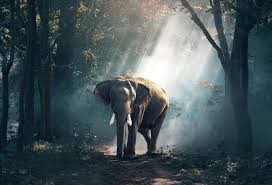
Understanding SDG 15: Life on Land
SDG 15 aims to protect, restore, and promote sustainable use of terrestrial ecosystems, halt biodiversity loss, and combat desertification and deforestation. It recognizes the crucial role that healthy ecosystems play in supporting life, providing essential resources, and maintaining a balanced climate. By promoting conservation, sustainable land management, and the preservation of biodiversity, SDG 15 offers a comprehensive framework for nurturing life on land.
Preserving Biodiversity: The Key to Ecosystem Resilience
Biodiversity is the foundation of thriving ecosystems. It encompasses the variety of species, genes, and ecosystems present on Earth. However, human activities such as habitat destruction, pollution, and overexploitation have led to a rapid decline in biodiversity. Embracing SDG 15 entails protecting endangered species, conserving habitats, and promoting sustainable practices that maintain the delicate balance of nature. By doing so, we can safeguard the resilience and long-term viability of our ecosystems.
Combating Deforestation: Restoring the Lungs of the Earth
Deforestation remains a critical issue worldwide, with severe implications for climate change, biodiversity loss, and local communities. SDG 15 emphasizes the need to halt deforestation, restore degraded lands, and promote sustainable forest management. By implementing reforestation initiatives, supporting responsible timber production, and empowering local communities, we can replenish our forests and restore their vital role as the "lungs of the Earth."
Tackling Desertification: Restoring Arid Lands
Desertification, the degradation of dryland ecosystems, threatens the livelihoods of millions of people and exacerbates environmental challenges. SDG 15 calls for sustainable land management practices, soil restoration, and afforestation in arid regions. By adopting techniques like agroforestry, water conservation, and land rehabilitation, we can combat desertification and transform barren lands into productive and resilient ecosystems.
Promoting Sustainable Land Management: Balancing Human Needs and Ecosystem Health
Achieving sustainable development requires striking a delicate balance between human needs and the health of the environment. SDG 15 emphasizes the importance of sustainable land management practices that promote responsible land use, reduce soil degradation, and protect natural resources. By adopting techniques like regenerative agriculture, sustainable forestry, and land zoning, we can create a harmonious relationship between humans and the land we depend on.
Earth is home to a vast array of species, showcasing an incredible diversity of life. While it is impossible to provide an exact count due to the constant discovery of new species and the potential extinction of others, scientists estimate that there are millions, if not billions, of species on our planet. Here are some of the major taxonomic groups and examples of their diversity:
Bacteria: Bacteria are single-celled microorganisms that can be found in almost every environment on Earth. They come in various shapes and sizes, and their diversity is immense. Examples include cyanobacteria, which perform photosynthesis, and extremophiles, which thrive in extreme environments such as hot springs and deep-sea hydrothermal vents.
Archaea: Archaea are another group of single-celled microorganisms. They often inhabit extreme environments like acidic hot springs, salt flats, and deep-sea hydrothermal vents. Archaea exhibit remarkable diversity and have unique metabolic processes that set them apart from bacteria and other life forms.
Protists: Protists are a diverse group of eukaryotic microorganisms. They include algae, amoebas, and ciliates. Protists can be found in aquatic habitats, soil, and even in the bodies of other organisms. Examples of protist diversity include diatoms, which are photosynthetic algae with intricate silica shells, and Paramecium, a ciliate that propels itself using tiny hair-like structures called cilia.
Fungi: Fungi are a kingdom of eukaryotic organisms that play crucial roles in ecosystems. They range from microscopic molds and yeasts to large mushrooms. Fungi can be found in diverse habitats, including forests, deserts, and even within the bodies of other organisms. Examples of fungal diversity include the vast array of mushroom shapes, sizes, and colors found worldwide.
Plants: The plant kingdom includes a wide variety of organisms that range from small mosses and ferns to towering trees. Plants are primarily photosynthetic organisms, providing oxygen and serving as the foundation of terrestrial ecosystems. The diversity of plants is evident in the vast array of species, ranging from delicate flowers to massive conifers.
Animals: Animals represent an incredibly diverse group of multicellular organisms. They are found in almost every habitat on Earth, from the deepest oceans to the highest mountains. Animal diversity spans from microscopic invertebrates like rotifers and nematodes to large vertebrates such as mammals, birds, reptiles, and fish. Examples of animal diversity include the incredible range of body forms, behaviors, and ecological adaptations observed across the animal kingdom.
It is important to note that the estimate of species diversity is subject to change as new species are discovered and our understanding of existing species evolves. Nonetheless, the vast diversity of life on Earth is awe-inspiring and highlights the complexity and beauty of our planet's ecosystems.
Conclusion:
SDG 15 presents us with a clear vision and actionable steps to protect, restore, and sustainably manage life on land. By embracing these goals, we can secure a prosperous future for both people and the planet. Whether it's preserving biodiversity, combating deforestation, tackling desertification, or promoting sustainable land management, every individual has a role to play in nurturing life on land. Let us unite our efforts and work towards a sustainable and resilient future, where thriving ecosystems support the well-being of all living beings.
Tooba noorさんをフォローして最新の投稿をチェックしよう!
0 件のコメント
この投稿にコメントしよう!
この投稿にはまだコメントがありません。
ぜひあなたの声を聞かせてください。
